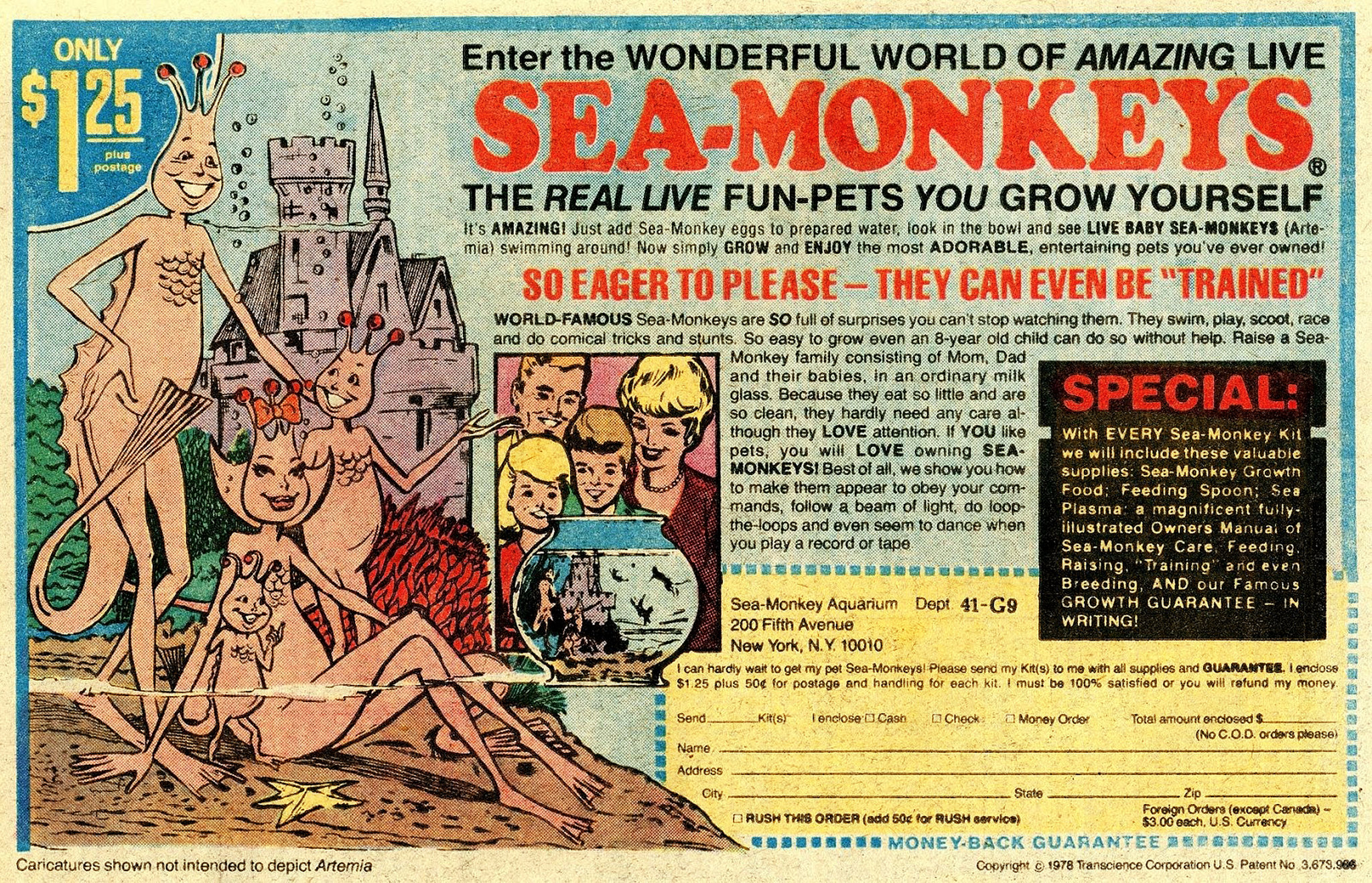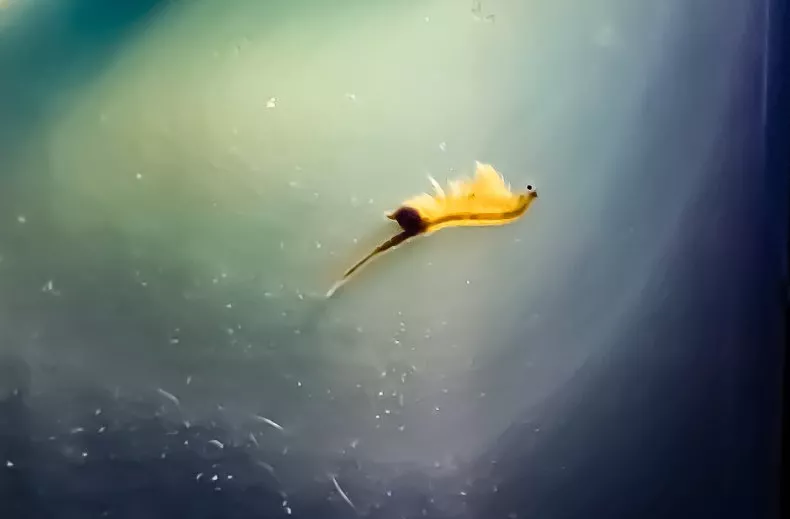
Are you also the one who can only imagine about dogs or cats when asked about household pets? Well then you should update yourself. The definition of “pets” has been recreated since 1957. Harold Von Braunhunt opened the door to a novelty pet that took the world by storm.
Let’s break it down.
Have you ever heard about Sea-Monkeys? No, they’re not mythical creatures of the deep, but they do have a fascinating story that’s sure to pique your interest. The journey of sea monkeys, or Artemia NYOS, began back in 1957 in the United States. A man named Harold Von Braunhut, with a keen interest in novelty aquarium pets, developed these intriguing creatures. They’re not monkeys, of course, but a type of brine shrimp.
Here is the story how it all started
The man who created sea monkeys aka Artemia NYOS

In the year 1957, when Harold von Braunhut was in a pet store, he noticed a brine shrimp being fed to a fish. Although it was just a common sight, Harold was intrigued by the idea of preserving and reviving brine shrimp and thought, Why not market it as an instant, easy-to-care-for pet that could be brought to life with just a bit of water and teach children about unusual sea life?
And the journey to a new invention began
In the year 1960, harold introduced a hybrid brid of brine shrimp called Artemia NYOS. and the main motto behind all these was to make children witness how water creatures come to life just in front of their eyes.
However, the idea wasn’t a hit until 1962, when Harold came up with the new iconic name of “sea monkeys.”. But where did he find the name? It was when he noticed the little tails of brine shrimp that looked exactly like monkeys. So he acknowledged these cute little sea creatures with the beautiful name of “sea monkeys.”. It was also a catchy name to attract children.

Next? It was a hit this time. The new name paid off his efforts and “sea monkeys “ as pets became an extremely popular idea maong children who were delighted with the idea of having a cute little pet in their tank. And all you need to keep the pet alive was just a little water.
Are sea monkeys real animals? Can they be found in nature?
Little sea monkeys are real marine animals. Just like any other animals they and mate and create offspring. But whats most surprising and interesting is, even if they don’t mate, the females can give birth to babies themselves through a process called “parthenogenesis” or (self-conception.)
Another unique feature of the animal is that they breathe with the help of their feathery feet. Isn’t it interesting? These little transparent water pets are born with only one eye that grows to two more as they mature.
Despite the interesting feature of the pet and the overall success, there was still a challenge. And that’s their life span. These cute little water pets didn’t live long. To address this issue, Harold joined hands with marine biologist Anthony D’Agostino. Together, they came up with a process called “superhomeogenation.”. Although it took a few years to get the desired result,. after two consecutive refinements in the years 1070 and 1995, the little sea monkeys were blessed with an increased lifespan of upto two years.
Sea monkey kit: Raise sea monkeys at home
The special little pets need certain specific conditions to thrive. Thus, when you want to raise sea monkeys at home, you will have to buy the sea monkey kit that contains 3 special packets to help the little creature be born , grow, and survive.
The first packet is a one-time water purifier to clean up any toxic chemicals in the water that can interfere with or hurt the systems of the little, delicate water pet.

The second packet in the sea monkey kit comes with crystals that get into egg shapes once they dissolve in water. Once they take shape, the eggs will immediately hatch into the newly born pets inside. Isn’t it amazing?
In the last step, you get a nutrition packet. Yes special diet is important for the little creatures to grow well. When setting up their environment, you should consider key factors like water levels, lighting, water temperature, and of course, algae.
How fully grown sea monkeys look like?
Fully grown sea monkeys are tiny crustaceans that typically reach around 1 inch in length when mature. They have an elongated body segment bearing 11 pairs of phyllopod legs, which they use for swimming and feeding. These legs branch out in a feathery pattern from the main body trunk. At the front, sea monkeys have a pair of curved antennae and two stalked compound eyes on their head. The translucent bodies of Artemia NYOS appear greenish-brown in color due to the algae they consume. When swimming, the rhythmic beating of their leg appendages creates a mesmerizing wave-like motion. Despite their name, sea monkeys aren’t true monkeys but are actually brine shrimp – a prehistoric species over 20 million years old.

Also Read: Sea Monkeys FAQs
Sea monkeys, how big?
Fully grown Artemia NYOS or sea monkeys are incredibly tiny creatures, with an average length of around 1 inch or 2.5 centimeters when they reach maturity. These miniature marine animals belong to the species Artemia salina, which are a type of brine shrimp that can thrive in extremely salty water conditions. Despite their small stature, sea monkeys have elongated body segments with 11 pairs of feathery legs called phyllopods that they use for swimming and feeding. Their size allows dozens, or even hundreds of sea monkeys to inhabit a single fish tank or aquarium habitat. However, their diminutive scale also means they are easily overlooked by the naked eye without the aid of a magnifying glass or microscope to truly appreciate the intricate details of these fascinating tiny crustaceans.
What’s Next
Explore the world of the unknown with sea monkeys and other interesting stories . learn more about the intriguing life cycle of Artemia in our upcoming blog.
Stay Tuned.